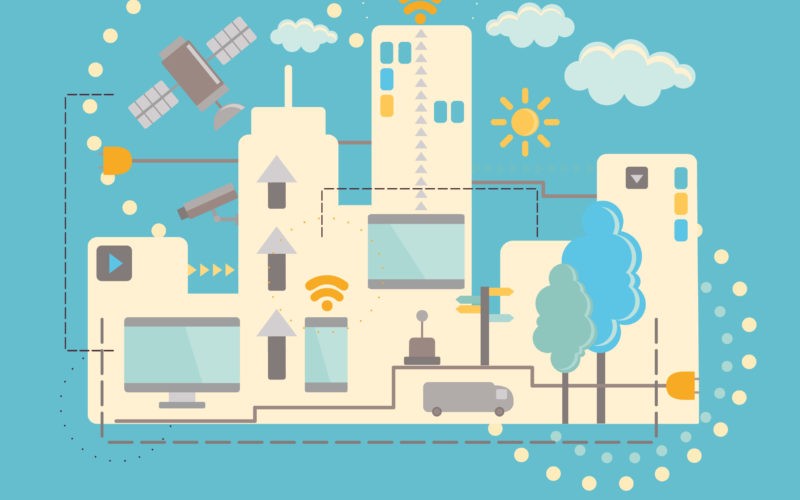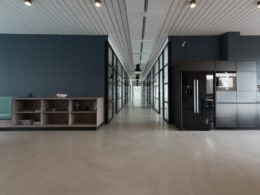Many officials and businesses now prioritize saving energy as the population grows. So, energy-efficient office buildings have received little attention. As energy costs rose, so did consumer and production prices. With a growing concern for the environment, corporate managers began to focus on passive designs and energy-efficient technologies. The change does not only contribute to decreasing operational costs, but also dramatically increases employees’ efficiency. This article presents energy efficiency in office buildings. It will show its benefits, based on facts and practical solutions.
Understanding energy efficiency
Energy conservation on the other hand means using a minimum amount of energy required to accomplish a particular activity. Concerning office buildings, this can comprise; the use of insulation; adequate lighting; controlled use of HVAC; and the use of renewable energy among others. For example, window companies take very important roles in this regard by offering excellent window options that help to lessen energy consumption resulting from heat loss.
As per the U.S. Department of Energy (DOE), 40% of total energy consumption in the United States is used by its buildings. According to the International Energy Agency (IEA), if energy efficiency in buildings could be improved, it could reduce energy consumption by 50% by 2050. The potential for businesses to bring down costs while supporting the cause for global sustainability is a huge opportunity.
Energy efficiency in cost reduction
Cost savings was (and still is) one of the most compelling reasons to invest in energy efficiency. “The Lawrence Berkeley National Laboratory found that energy efficient buildings can save energy costs 30 to 50%.” Say, for instance, a company that rents a 100,000-square-foot office building: by energy-efficient upgrades, they can save between $30,000 and $50,000 a year.
Additionally, the U.S. Green Building Council (USGBC) reports that green buildings – those designed with sustainability in mind – can save up to 20% on operating costs compared to traditional buildings. These savings stem from reduced utility bills, lower maintenance costs, and potential tax incentives for sustainable practices.
Increased productivity
Unlike financial profits, energy efficiency affects the productivity of employees in a given firm. According to research led by Harvard T.H. Chan School of Public Health, it is stated that by improving indoor air quality through efficient means that come with improved energy-efficient ventilation systems the employee’s productivity improved by 61%. It has a significant impact on employees’ cognitive function, such as response speed and attentiveness.
Moreover natural light is very effective in improving productivity, especially in the workplace. Studies conducted by the Heschong Mahone Group show that persons who have access the natural light are more productive by 15%. These reasons are due to better mood and low energy state, therefore motionless which allows for optimal use of natural light in contemporary offices is necessary for efficient buildings.
The role of technology
Offices are easy to retrofit and make energy efficient using modern technologically developed equipment and tools. Electrical controller systems and smart thermostatic control systems using automatic lighting, occupancy sensors, etc enable business organizations to check their energy consumption patterns in real-time. McKinsey Company report revealed that the adoption of smart building technologies would improve energy efficiency by as much as 30%. Building technologies – such as automated lighting systems, smart thermostats, and occupancy sensors – allow businesses to monitor and optimize their energy usage in real-time.
According to a report by McKinsey Company, implementing smart building technologies can lead to energy savings of up to 30%. Not only do these technologies make for energy savings, but they also provide a better overall environment to the employees at the workplace.
Case studies: successful implementations
Many companies have successfully implemented energy-efficient practices with great success. For example:
• The Bullitt Center in Seattle is often referred to as the “greenest commercial building in the world.. Natural ventilation, rainwater harvesting systems, and solar panels are a few of the features of its design. Demonstrating that sustainable design can be both functional and cost-effective, the building operates at net zero energy consumption.
• Google’s Campus in Mountain View, California, utilizes advanced energy-efficient technologies such as geothermal heating and cooling systems. This has helped Google cut its carbon footprint by a lot and give its employees a nice and productive workplace.
These examples show that energy efficiency is an investment not just an expense, but a strategic move with great long-term benefits.
Government incentives and regulations
Policies encouraging energy efficiency are becoming more common in governments around the world. In the United States, ENERGY STAR programs give guidelines and certification for energy-efficient buildings. The EPA says buildings with the ENERGY STAR label consume, on average, 35% less energy than buildings of similar type and age.
There are also tax incentives for businesses that upgrade to energy-efficient upgrades. Companies can deduct a percentage of the cost of installing solar panels through the Federal Investment Tax Credit, or ITC. With such incentives, businesses find themselves financially feasible to do so.

Employee well-being and retention
Energy efficiency also benefits employee well-being, a key retention and recruitment motivating factor. As part of their survey, the World Green Building Council discovered that 68% of employees would rather work in green-certified buildings as they feature better air quality and natural light.
Also, companies pay more attention to employee well-being and also have lower turnover rates. Gallup reported that organizations whose employees engage score 21% higher profitability and 17% higher productivity compared to organizations with employees who do not engage.
Conclusion
Finally, in supporting energy efficiency in office buildings, we have demonstrated that the benefits are far beyond cost-saving. Businesses can produce a more sustainable work environment that improves employee well-being by reducing operational expenses and increasing productivity. Now that technology is advancing and governments are supporting more sustainable practices, it is time for companies to invest their time and money in energy-efficient products. On the route to a greener future, energy efficiency is the key to environmental sustainability and business success.
With sustainability becoming more important to organizations, financial and productivity-derived benefits from energy-efficient office buildings will be critical as the market always evolves. The data speaks for itself: That means that energy efficiency is not only an ethical choice but a smart business strategy for the future.












